Connectivity Through Form: Sacred Geometry & the Golden Mean
March 8, 2011 § 20 Comments
“There is a special ratio that can be used to describe the proportions of everything from nature’s smallest building blocks, such as atoms, to the most advanced patterns in the universe, such as unimaginably large celestial bodies.” Justin Kuepper
“The man who speaks with primordial images speaks with a thousand toungues.” Carl Jung
The Golden Ratio — also known as the Golden Mean, Phi, or the Divine Proportion — has inspired the imagination of artists, mystics, and mathematicians for centuries.
The proportion is derived from something known as the Fibonacci sequence — an arrangement of numbers wherein each succeeding term is simply the sum of the two preceding terms (1, 1, 2, 3, 5, 8, 13, etc.) The Fibonacci Sequence forms the basis for our Golden Ratio — 1.618 — a proportion which recurs with amazing consistency throughout the natural world.
For instance, sunflowers, which have opposing spirals of seeds, utilize the Fibonacci sequence to most efficiently distribute their seeds in the most compact space.
Ancient Greek philosopher and geometer Pythagoras is thought to be the first to have determined that human proportions themselves corresponded with the Golden Mean — later revisited by Leonardo da Vinci, most famously explored in The Vitruvian Man sketch.
The Golden Mean is unique in that the ratio of the whole to the larger portion is the same as the ratio of the larger portion to the smaller portion of the whole.
For instance, the length of any given person’s shoulder to their fingertips (the whole), divided by the length from their elbow to their fingertips (the larger portion), results in the 1.618 Golden Ratio. Then also the length from their elbow to their fingertips (the larger portion) divided by the length from their shoulder to their elbow (the smaller portion) will yield the same result. The Golden Ratio. Completely consistent and the same in every human being.
Another example: if you divide the number of female honey bees by the number of male honey bees in any given hive, you will get — that’s right — 1.618. The Golden Ratio.
“The Fibonacci numbers are Nature’s numbering system. They appear everywhere in Nature, from the leaf arrangement in plants, to the pattern of the florets of a flower, the bracts of a pinecone, or the scales of a pineapple. The Fibonacci numbers are therefore applicable to the growth of every living thing, including a single cell, a grain of wheat, a hive of bees, and even all of mankind.” ~ Stan Gris
We see the Fibonacci spiral in everything from DNA ….
…. to the spiral of our solar system ….
…to the inside of the human ear …
…to the “Logarithmic Spiral” of a common shell.
Below, see the mathematical representation of the Fibonacci Spiral.
Not surprisingly, the proportions within the Golden Ratio are commonly utilized in art and architecture to obtain maximum aesthetic harmony.
These patterns are backed mathematically with astounding consistency, suggestive of order within the seeming chaos of our world. For some, the existence of the Golden Ratio is proof even of God. At the very least, it shows an architectural harmony to the building blocks of life.
The belief that God created the universe according to a geometric plan has ancient origins. Plutarch attributed the belief to Plato, writing “Plato said God geometrizes continually.” In modern times the mathematician Carl Friedrich Gauss adapted this quote, saying “God arithmetizes.”
These naturally recurring patterns have a close relationship with Sacred Geometry, the use of geometric form as cosmic language, most famously represented by the mandala. Classically used in Eastern religions to help aid meditation, the mandala can be found in diverse cultures throughout the world, often representing the connectivity and continuity of life.
On his Sacred Geometry website, Bruce Rawles muses:
The fact that the root [of the Golden Ratio] is [mathematically] irrational expresses the concept that our higher dimensional faculties can’t always necessarily be expressed in lower order dimensional terms – e.g. “And the light shineth in darkness; and the darkness comprehended it not.” (from the Gospel of St. John, Chapter 1, verse 5).
The figure above, The Flower of Life, is the modern name given to the ancient geometrical figure composed of multiple evenly-spaced, overlapping circles. It is considered by many to contain ancient, religious value depicting the fundamental forms of space and time. Found in the palace of an Assyrian King, the oldest Flower of Life design dates back to 645 BC.
Below, we see its pattern echoed in a snowflake.
…and again in a Mandala.
From the Flower of Life, the Egg of Life is born.
The distances between the spheres of the Egg of Life are identical to the distances between the tones and half tones in music. Also, they are identical to the cellular structure of the third embryonic division.
A shape also echoed by atoms.
When viewed together, this seemingly disparate array of forms become a fascinating interplay of universal symbols, suggesting order and connectivity, from plant, to animal, to man; from the tiniest atom cluster to the largest intersteller swirl.
And it all starts with a simple mathematic sequence.
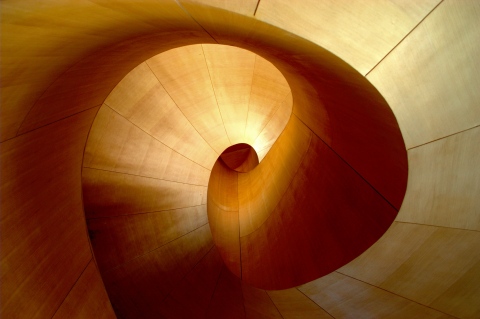
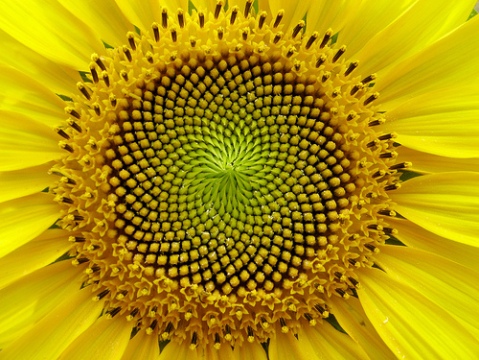
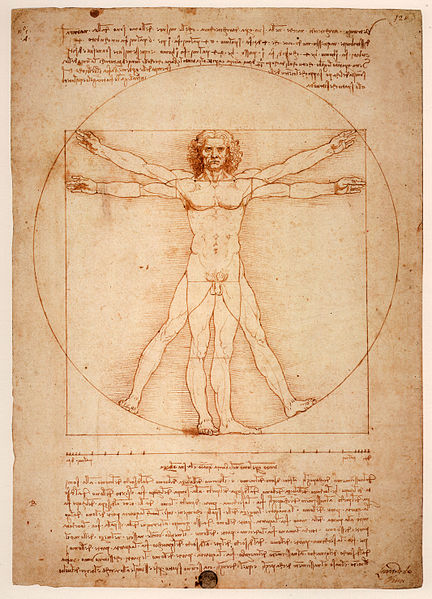





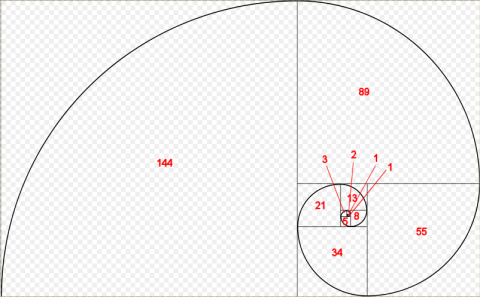

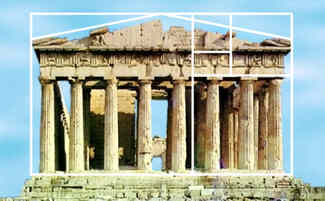



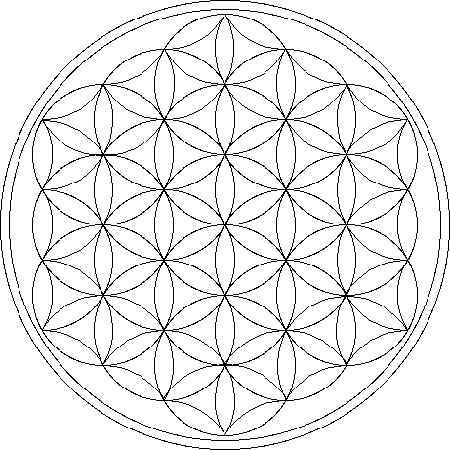







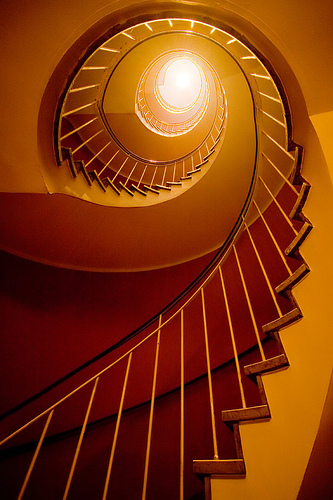
Beautiful!
I love your website. Keep writing!
I’m not scholarly, but I love having a basic overview of the human and universal psyche. Not a lot of people share this passion so I hope you may always have the circumstance to share with us.
Thank you so much for the props! They absolutely keep me writing. 🙂 These subjects fascinate me as well…and it’s not the most in-demand-subject, so it really lights my fire when I hear back from people who share my fascination. It seems like too often the subjects of psyche and existence get relegated to the musty-mouthed language of philosophy majors (which is awesome for them, but the lexicon is extremely exclusive and discouraging for non-Philosophy majors…) I wanted to deconstruct some of these questions and how they apply to our society in more accessible terms. I’m thrilled it’s working!
You deserve the praise. You play your role well. You explain the subject so well without tangents and deviation on topics that could otherwise explode from the sheer volume it potentially holds. And you’re right, when I try to these topics from texts of specific books, my head just hurts and I end up staring at the wall. If I even try to explain it, my tongue ties in knots. And living in a city without green in it, I’m so removed from nature, reading about it in a simple, yet profound tone, reminds me we’re not all on auto-pilot. We can still connect to something meaningful if we just look for it. Oh and you should know your passion comes through in your writing. It’s not just informative factoids. 🙂
Oh, that is just so nice for me to hear, Elena! I love what you said about knowing that not everyone is on auto-pilot, that we can still connect to something meaningful if we just look for it…that is very much what I feel my message is, if I have a message at all, and mostly I just try to explore concepts more than deliver messages, but the message of waking up from the collective modern trance state, or “the daily grind” as it is known, to remember the true connectivity that lies just beneath our feet in the ground, the importance of remembering how nourishing and grounding nature is, and what that implies about our existence and the cosmos at large (a greater harmony at work than we conceive) is a message I am honored to deliver. 🙂
It can be hard when you’re removed from nature to connect with it. I recommend parks, arboretums, and surrounding yourself with beautiful images from nature, and even recordings of say, birds or the ocean. “Nature sounds.” It’s not something many of us think to buy, but if you’re looking to connect without much in the way of real nature to connect to, I think it can help bridge the gap. 🙂
…just discovered your blog…beautiful in so many ways! thanks for your writing and visuals!
Thank you so much, Peg! Comments like that make my day!!! 🙂
you just rocked my world…congratz
well, thank you for telling me! that rocks my day! 😀
supremely beautiful
i have learnt paper sizes DIN (german) are in this proportion.
there’s this song also compossed in the fibonacci sequence: http://www.youtube.com/watch?v=wS7CZIJVxFY
Great Information! I am an Art student who has just found the underlying focus for a very open-ended assignment. I chose to focus on pattern. I will definitely be siting your source. Thanks for writing the way you do with info AND passion:)
You’re welcome. Thanks for the kind words. 🙂 TC
http://www.patternandbelief.com
Moving into the realm of math for the first time in my life has brought new patterns to life all around me, even if I don’t yet know enough to explain them.
I was cleaning a car dealership late at night, and someone had been in the children’s playroom and had taken every single Lego and had made a tower with it. But this wasn’t any old tower, somehow it was the most exquisite pattern that I had ever witnessed. I couldn’t even describe what about it was perfect in every way…was it the way they had spaced the colours? I couldn’t tell, and didn’t have time to sit and figure it out. I knew without a doubt that if a kid made that he was a genius. Even an adult, they had to have been brilliant. Taking it apart was painful for me, I wanted to sit and stare at it forever.
This information you’ve so wonderfully woven together here is the largest reason that I decided to change my life’s direction into the worlds of math. Math IS the language of god, the language of the universe. I want to speak that language. I’ve always been horrible at math, I couldn’t even balance my checkbook. Now when someone says “You’re doing physics? I could never do that, I’m horrible at math!” as so many do, I feel sad because I used to believe the same. It simply takes the desire to know, and an origami state of mind. Math folds information in a way that doesn’t come naturally to many people, but anyone can learn its design.
I think that’s why math reaches out to us in the beauty of nature, the lilt of a singing voice, the carefully crafted mandalas of the Buddhist monks. It shows us the beauty around us, and reminds me that we are that beauty.
So beautifully said, 64doors, thank you for sharing. I love that story about the legos! I can just picture it!
I have always been one of those people with a total mental block about math. It started in second grade when I would have trouble with my math homework & my mother would say to me, “Oh, it’s okay, I was horrible at math too.” Which sort of brainwashed me—though her intentions were to make me feel better—and gave me permission into this mentality of “math people & non-math people” of which you speak.
It’s definitely a good & needed gospel to spread that it’s not some esoteric thing, but rather something anyone can learn, that just doesn’t come naturally to many. By the time I reached high school I “hated” math because it had caused me so much frustration & self-doubt; by that time I had missed essential building blocks & just managed to pass by the “skin of my teeth.” When I got into a college that didn’t require GE classes I was thrilled! No more math for me! But recently I became curious about why these things like word problems would cause me to mentally & emotionally freeze up and were they really so hard? I started looking at the sorts of questions that used to send me into high states of anxiety and realized it really was not rocket science. I had just worked myself into a state of total resistance & fear every time I saw a number.
I would like to go back and learn what I missed. Would be both a good exercise for my brain, I think, and healing for that inner little kid who felt stupid because she couldn’t “get it.” I definitely think it’s a mentality, a psychological block, which some people develop towards math.
I applaud your going into such a math-based field and not letting your former blocks dictate your destiny. Physics & quantum physics really IS the new frontier!
It’s also always exciting to me when metaphysically inclined people take the time to truly learn about physics. Because there are a lot of exciting connections being made between physics and metaphysics, but a lot of it seems like it’s being made by the more metaphysical people, who may not actually have a firm grasp on the scientific concepts they are trying to fold into their spirituality…and even though I believe the two subjects *absolutely* synthesize, it’s great to have one less pseudoscience bridge out there, one more legit world connector!
I think having someone for whom math did not come naturally as a physics teacher, or writing about physics, or just talking with friends about physics (or on blogs, hehe) is quite revolutionary and important because it shatters those assumptions about who can “do” math.
And you’re right! Math is the language of the universe, of divine creation…clearly! And it is a universal language. So important. So exciting. I said once in a comment that I thought with your background in metaphysics as you train up in PHYSICS you will do great things in the field and you modestly dismissed it, saying there were so many great thinkers who blew you out of the water. But I think you have a unique asset, which is that you did not take to it naturally like them, so you have a more wholistic, creative perspective than them potentially. You don’t assume because you have a pre-math perspective riding alongside your math-initiated perspective. I think this will just give you a neat edge, a special perspective you will bring to the field. You’re already doing it, inspiring math-phobic philosophers like me!
On on,
TCW
Beautifully said yourself. 🙂 In fact, me and my twin sis were just talking about that! She is applying a metaphysical approach to Russian Literature, ad I to physics. She has become a Nabokov scholar, a Russian writer well-known for his mysteries and depth. Because of her religious background she is finding all sorts of biblical quotes and puzzles that no one has found before, but with her newly-realized metaphysical path she sees beyond the more rigid definitions of these scriptures to the transcendent message that Nabokov hid beneath!
She decided to go back to school because of me. Now we are sharing our gifts with this community, so I will descend my dismissal of the gift I have to offer. You’re right. I don’t want to be famous, I jut want to add my unique take to the compendium. Thanks, Sister. 🙂
That’s so cool! Exactly what I mean. On on!
[…] “Connectivity Through Form” […]
Fascinating!
Thank you! 😀 It really is an endlessly fascinating subject. I’m honored my piece could be a doorway into its mystery for you. There’s a lot more to it, and worth continued exploration. On on! TCW